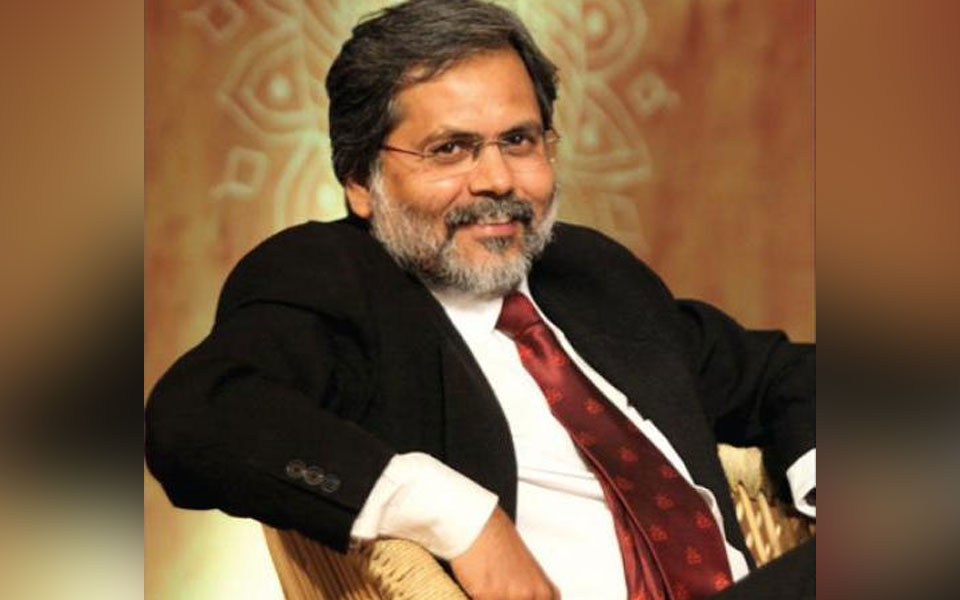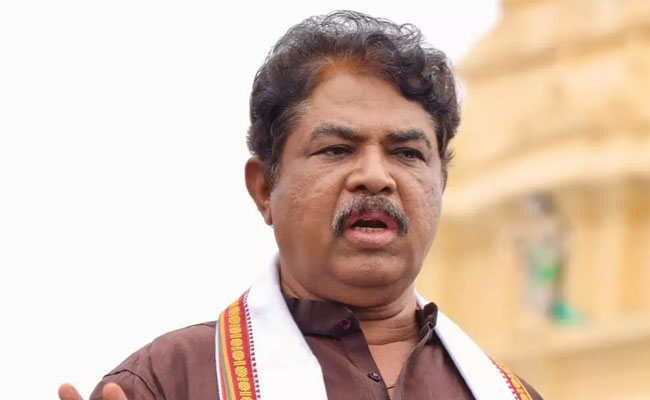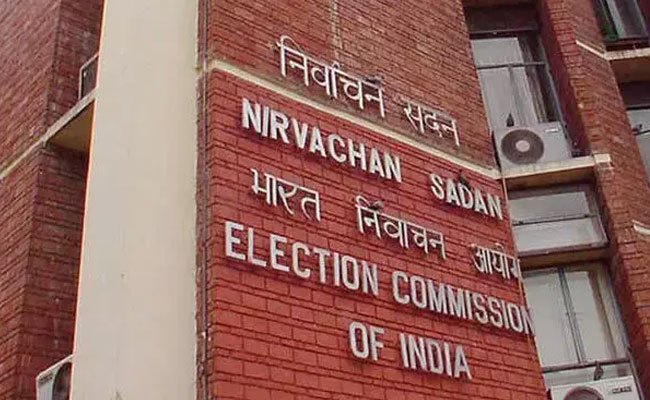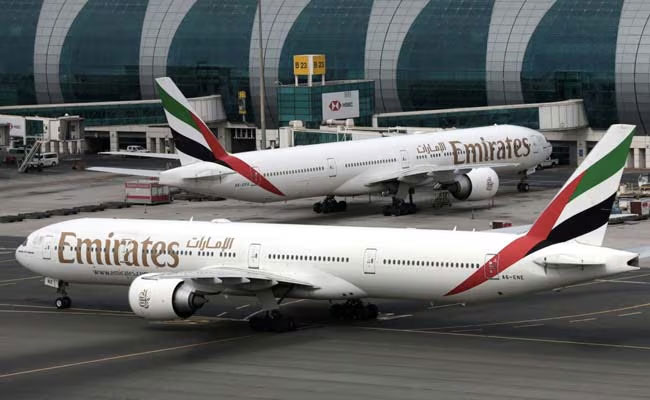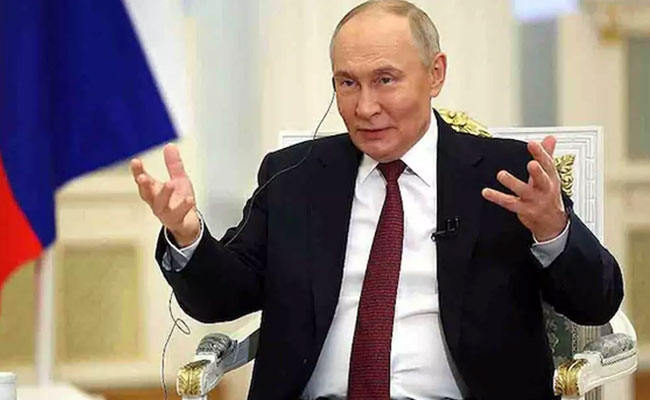'From being told not to take Narendra Modi's name on my show or show his image on any programme critical of the government to a sinister blacking out of my show, Masterstroke, what happened was nothing short of censorship.'
On July 14, 2018, the proprietor-cum-editor-in-chief of the national news channel ABP, owned by the Ananda Bazaar Patrika Group, had a conversation with me along these lines:
Proprietor: “Can you refrain from mentioning the name of Prime Minister Modi [in your programme]? Mention the names of his ministers by all means; point out anything amiss in a government policy if you want to, even name the minister of the concerned ministry. Just don’t refer to Prime Minister Modi anywhere.”
I replied: But when Prime Minister Modi himself announces every government scheme, involves himself in the work of every ministry; and when every minister utters the name of Prime Minister Modi every time s/he mentions any scheme or government policy, how is it possible for us to not take Modi’s name?
Proprietor: I say, stop insisting. See for a few days how it plays out. As a matter of fact you are doing the right thing. But leave it be for the time being.
This order/directive was preceded by a long conversation on news presentation and its impact, the changing perceptions about the channel and its attendant benefits. The proprietor admitted that my show, ‘Masterstroke’, had raised the credibility of the channel. In his words, the kind of research that went into Masterstroke, the way news was reported from ground zero and government policies mapped through the report, the quality of graphics and script were things he was seeing for the very first time on this channel.
Even as the proprietor-cum-editor-in-chief was enthused by the changes in the manner of news presentation on the channel, he kept asking that if things remained the way they were, with just the prime minister’s name being out of bounds, would it make such a difference.
This long discussion was eventually followed by the directive that the prime minister’s name was indeed not to be uttered on-screen.
In the context of the prevailing political scenario, following the diktat would be an immensely difficult task. Take, for instance, a report on unemployment in India highlighting the government’s claims of employment generation through its skill development programme. How would it look, showing the reality on ground without a whisper about the claims made by Prime Minister Modi about the success of the programmes?
On the one hand, the prime minister says that the skill development initiative has a target of training 40 crore youths by 2022. However, the truth is that as of 2018, the number of youngsters trained thus far has not even reached the 2 crore mark. Moreover, on-the-ground reports show that in all those places where skill development centres were opened, eight out of every 10 are non-functional. For the team of ‘Masterstroke’, following orders from the top would have meant showing the situation on ground through a script from which the name of Prime Minister Narendra Modi would be erased.
There was another problem with the diktat, namely that we are talking about television news and not a newspaper. The script might well skip the name of Prime Minister Modi. However, in a situation where the government is associated only with Modi, any reference to the government means that the entire video library will have nothing but footage of Modi. It is a fact that from May 26, 2014 to July 26, 2018, the minute any editing machine had to deal with news about the Modi government or of any project of the Modi government, on an estimate, 80% of the images that surfaced were of Modi. So as soon as an editor glimpses the words ‘the present government’ in the script, the only image that presents itself is that of Prime Minister Narendra Modi. Say, on a programme like Masterstroke, even though the words ‘Prime Minister Modi’ may not be uttered or heard, there is no doubt that the image that graces the screen will be his.
I had not anticipated that within 100 hours, a second diktat – that even the image of Modi should not appear on Masterstroke – would come my way. But come it did.
This time, the discussion with the proprietor started with the query: “Has the government of the day come to mean just Modi? Is it possible to prepare a report without showing Prime Minister Modi’s image?”
I responded with a question of my own – in four years the Modi government has announced 106 schemes. Coincidentally, the announcement of every scheme has been made by the prime minister himself. The onus for publicizing every scheme may well rest on the concerned ministry and minister, but it is the name of Prime Minister Modi which dominates the publicity of every initiative. So even if an on-ground news report does not refer to the prime minister in the context of the scheme’s success or failure, those affected by it will, and constantly do, utter the name of Modi – be it a farmer or a pregnant woman, jobless youth or trader.
Whether you ask them about the crop insurance scheme, the Matritva Vandana Yojana, Mudra Yojana or GST, those who fall within the ambit of those respective initiatives refer to Prime Minister Modi without fail. In the same breath they say that they are not benefitting in any way from those schemes either. How then is one to edit their statements?
The only answer I got was this – Whatever it may be, but Prime Minister Modi’s image should also not appear on Masterstroke.
Incidentally, the question as to what would be accomplished by not showing the image of Prime Minister Modi or speaking his name on Masterstroke, was still a mystery to me. This is so for the simple reason that for the BJP which came to power in 2014, the government is synonymous with Narendra Modi. For the BJP, Prime Minister Modi is their unparalleled star campaigner as well. The face of the Sangh also happens to be former pracharak Narendra Modi. The world over, India has only one brand ambassador of it foreign policy – Narendra Modi. Within the country too, the person at the centre of every policy is Narendra Modi. Then why is an hour-long primetime programme like Masterstroke, aired on ABP – and in sixth place among the dozen odd national news channels in Hindi – causing such heartburn within the government?
To put it another way, what is the predicament due to which the proprietors of ABP News are being pressured to keep the name and image of the prime minister off the screen? In fact, for the last four years under the Modi government, the way everything revolved solely around Modi; and, in a country like India, the way news channels projected him to the exclusion of all others, what happened was that increasingly, the image of the prime minister and his speeches and utterances, as absorbed by viewers, became a sort of an addiction. Its impact was such that Prime Minister Modi became a necessity for the TRP ratings of news channels.
As the narrative about the country progressing towards “achche din” unfolded, it became an addiction for the news channels as well. To ensure that this ‘high’ did not wear off, the Modi government created a 200-member monitoring team which duly functioned under the additional director general of the ministry, who reported directly to the minister concerned.
The 200-member monitoring team functioned at three levels: 150 members were involved only in monitoring the channels; 25 members gave it the shape the government wanted; and the remaining 25 reviewed the final content. Based on this report, three officials of deputy secretary rank would prepare the report to be sent to the I&B minister, through whom the officials at the PMO would get activated and send their directives to the editors of the news channels about what was to be done and how.
If an editor spoke about running a channel solely according to what was newsworthy, then the officials at the ministry or the PMO would communicate with the concerned proprietor. To keep the pressure intact, they would send a file with the monitoring report, detailing how Prime Minister Modi’s statements, ranging from his election promises of 2014 to his claims on demonetisation, surgical strikes or GST could be shown again. Or how, in a report on an ongoing scheme, the prime minister’s old claims could be included. In fact, a dozen or so officials from the I&B ministry and the PMo work at the first level to ensure that the narrative of the Modi government’s successes is showcased in every manner possible. This is followed by the advice of the I&B minister, which is more of an order and, at the third level, there is the tone of the BJP with its many modulations.
Say, a channel does not confine itself to showing the Modi regime in a positive light at all times but occasionally includes stories with a negative tone or, on the basis of facts, shows the Modi government’s truth to be a lie. Immediately, BJP spokespersons are told to stop appearing on those channels; that is, they do not participate in any political discussion conducted by that channel. This started happening on ABP News from the last week of June this year – BJP spokespersons stopped appearing on its debates. A few days later, BJP leaders stopped giving bytes to the channel. The day the truth of the Prime Minister’s ‘Mann ki Baat’ was outed on Masterstroke, RSS ideologues too were told to stay off the channel.
Before absorbing the stark truth of Mann ki Baat and the events which followed, it is important to realise the extent to which the BJP’s parent organisation, the RSS, has become dependent on the Modi government. This was borne out on July 9, 2018, when in the midst of a 4 pm discussion on ABP, a professor taking part in the programme in his capacity as an RSS ideologue received a phone call telling him to leave the studio immediately. And the gentleman in question stood up and simply walked away from the programme that was being broadcast live. The moment he received the phone call, the expression on his face seemed to suggest that he had been caught committing a grievous offence – you could say it was the face of a frightened man.
All these machinations and yet they fell short of the desired result. Purely because the impact on viewers of the reports being aired on the channel were showing in improved TRP ratings; the presence or absence of BJP leaders in the studio did not seem to matter a jot. It was in these circumstances that the TRP report of July 5 and July 12 revealed that ABP had become the second most watched Hindi channel of the country.
It is important to mention that it was in this period that one edition of Masterstroke carried an exclusive report of the proposed thermal power plant in Godda (Jharkhand) – a project in violation of all rules and regulation, a project that is of the Adani group. For the first time, the woes of farmers in the area were brought out through this exclusive report – how Adani’s proximity to Prime Minister Modi had made the Jharkhand state government change its regulations; how the farmers had been threatened that if they did not part with their land for the power project, they would be killed. One farmer said as much on camera: “An official of the Adani group has issued a threat, if you do not part with your land we will be bury you alive. When we wanted to lodge a complaint with the police, they said “It is useless to complain. They are influential people, close to the prime minister.” With the farmer was his wife, her face mirroring her terrible grief.
The TRP rating of that edition of Masterstroke was five points higher than the average rating for the show. Masterstroke, which notched an average 12 point rating, spiked to 17 points the day the exclusive programme on the Adani plant was aired. Ironically, on August 3, when Opposition leader Mallikarjun Kharge stood up in parliament to raise the issue of the government putting a gag on the media, threatening the ABP channel and having a hand in getting its journalists sacked, the I&B minister had this to say: “Since Masterstroke was not contributing to the TRP ratings of the channel in any way, nobody wanted to watch it, the channel itself stopped it.”
The real explanation, however, for the unraveling circumstances is to be found in the growing TRP ratings of the channel. Not only was ABP’s Masterstroke becoming popular, its impact on the TRPs started showing in the first four months itself. The temperament of the reports appearing on Masterstroke was precisely to test the claims of the Modi government which came through reports from various parts of the country. What was repeatedly coming out in the editions of Masterstroke was the sheer hollowness of the claims being made by the government.
The government saw the approaching crisis: seeing that the people were beginning to appreciate reports showing its claims to be false and the channel’s TRP ratings were climbing, how would the other channels do in the coming times? In India, advertising is the biggest source of revenue for running the business of news channels, and advertisements are given to channels on the basis of their favourable TRP ratings. If the TRPs indicate that reports dismissing the Modi government’s claims of success as hollow are being appreciated by the people, then the news channels that continue to sing praises of the government stand to suffer a double crisis – loss of credibility and advertisements, or revenue.
This is the background against which finally action was taken to silence this kind of programming.
►This is an English translation of the exposé written by the former ABP News anchor Punya Prasoon Bajpai for The Wire Hindi about the circumstances of his departure from the channel and the official diktats which preceded it.
courtesy : thewire.in
Let the Truth be known. If you read VB and like VB, please be a VB Supporter and Help us deliver the Truth to one and all.
Bengaluru (PTI): Targeting Chief Minister Siddaramaiah and the Congress government in Karnataka on corruption, BJP leader R Ashoka on Friday said, being foolish was forgivable, but being "shameless" in public life was not.
The Leader of Opposition in the state Assembly claimed that in just 30 months of its tenure, the Congress administration has broken every previous record on corruption-related controversies.
He was responding to Siddaramaiah's post on 'X' on Thursday hitting back at the BJP, stating that Upa Lokayukta Justice Veerappa's claims of "63 per cent corruption" were based on his report in November 2019, when BJP's B S Yediyurappa was the CM.
"But Ashoka, without understanding the Upa Lokayukta's statement properly, has ended up tying the BJP's own bells of sins onto our heads and has effectively shot himself in the foot," the CM had said, as he accused Ashoka of foolishness for trying to twist Veerappa's statement to target the current government.
Responding, Ashoka said, "it is one thing to be called foolish in politics, that can be forgiven."
"But in public life, especially in the Chief Minister's chair, one must never become shameless," Ashoka posted on 'X' on Friday addressing Siddaramaiah.
Noting that the CM himself had admitted on the floor of the Assembly that a Rs 87 crore scam took place in the Valmiki Development Corporation, he said that when a CM acknowledges such a massive irregularity inside the floor of the House, the natural expectation is immediate action and accountability.
"But instead of taking responsibility, you continue in office as if nothing has happened. What should the people of Karnataka call this, if not sheer shamelessness," he asked.
Pointing out that the CM's Economic Advisor and senior Congress MLA Basavaraja Rayareddy had publicly stated that under Congress rule, Karnataka has become No.1 in corruption, Ashoka said, "Yet, you still cling to the Chief Minister's chair without a moment of introspection. What should the people of Karnataka call this, if not sheer shamelessness."
Senior Congress MLA C R Patil had exposed the "money for House" racket in the Housing Department and even warned that the government would collapse if the details he has were made public, Ashoka said.
"Despite such serious allegations from within your own party (Congress), you neither initiated an inquiry nor acted against the concerned minister. What should the people of Karnataka call this, if not sheer shamelessness," Ashoka asked the CM.
Highlighting the "40 percent commission" allegation Congress made against the previous BJP government, the opposition leader said, the commission that the Siddaramaiah government appointed concluded that the accusation was baseless.
"After your own panel demolished your own claim, what moral right do you have to continue repeating that allegation. What should the people of Karnataka call this, if not sheer shamelessness," he asked.
For the last two and a half years, Karnataka has been 'drowning' in corruption, scandals, irregularities and allegations across departments. Ashoka said, "If I begin listing every case that emerged under your government, even 24 hours would not be enough."
"And the most tragic aspect of your administration is this: the unbearable pressure, corruption demands and administrative harassment under your government pushed several officers and contractors into extreme distress - including the suicide of Chandrasekharan which exposed the Valmiki Development Corporation scam - a sign of how deeply broken the system has become under your watch," he said.
Instead of fixing this hopeless environment, the government has tried to bury every complaint and silence every voice, he charged.
"Being foolish is forgivable, but being shameless in public life is definitely not."
"When your own ministers admit scams, when your own advisors certify Karnataka as No.1 in corruption, and when your own MLAs expose rackets inside your departments - clinging to power without accountability is not leadership. It is shamelessness in its purest form." PTI KSU
Earlier on Thursday Ashoka had demanded that the corruption case and allegations in the state against the Congress government be handed over to a CBI investigation, citing a reported statement by Upalokaykta Justice Veerappa alleging "63 per cent corruption", following which Siddaramaiah hit back at the BJP leader.

